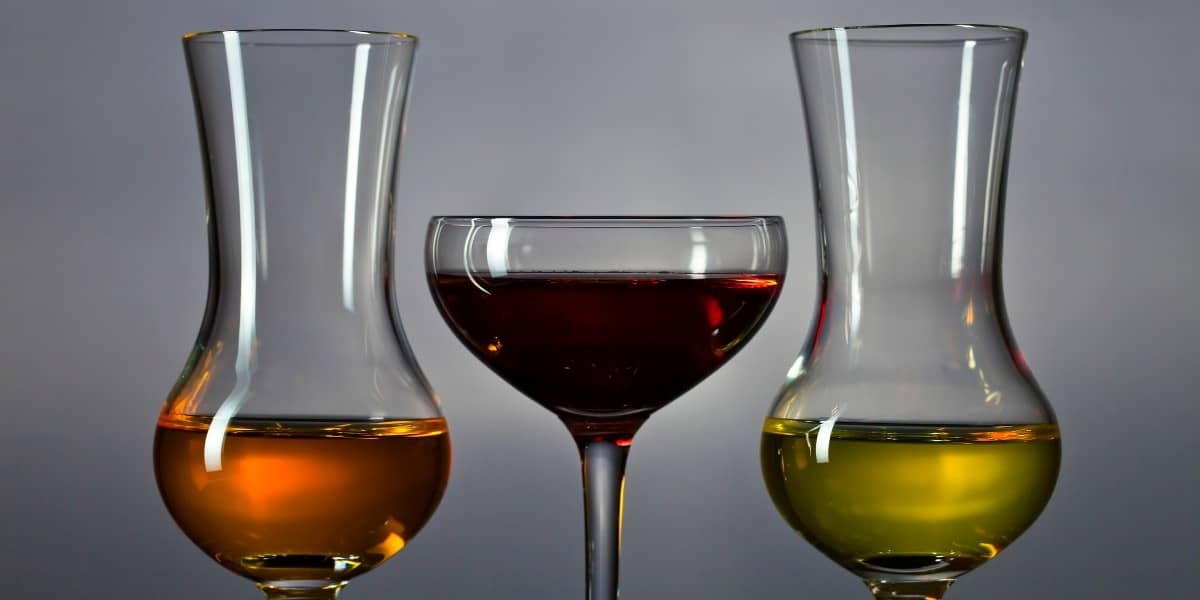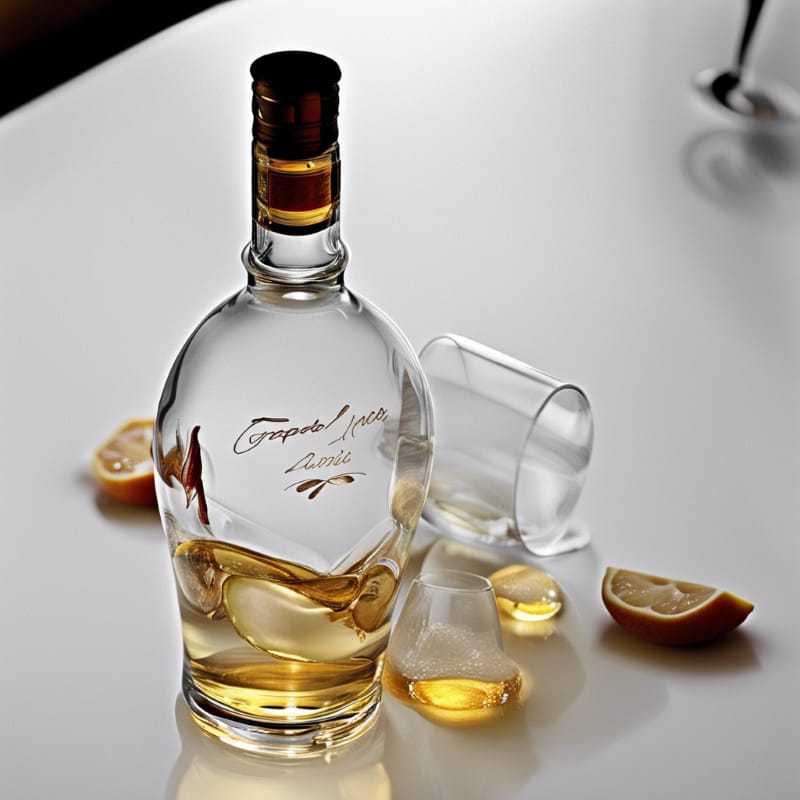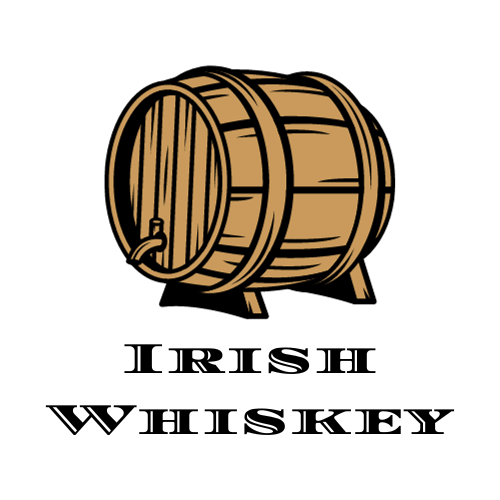Grappa is an alcoholic beverage distilled from the pomace of grapes used in winemaking. Its name comes from the Italian word for “grape stalks”.
It originated as a peasant drink in Italy, created by distilling leftovers from wine production to avoid waste and produce another alcoholic beverage.
Over the centuries, its production evolved from crude home distillation methods into a refined spirit made by professional distillers.
Today, it remains a quintessentially Italian drink steeped in tradition and regional pride.
A Brief History of Grappa
- Grappa dates back to the Middle Ages when winemakers sought ways to make use of grape pomace.
- Early home distillation methods produced a harsh “firewater”.
- Grappa was considered a working man’s drink rather than a refined spirit until the 1970s.
- Modern makers employ sophisticated distillation techniques and equipment to produce high-quality, nuanced spirits.
How Grappa Spread Across Europe
By the 1800s, grappa was gaining popularity beyond Italy and being exported to countries like France, Spain, and Eastern Europe where grapevines and winemaking thrived. Soldiers and merchants carried casks of it with them on journeys abroad, introducing the liquor to new regions.
But it was really the Italian diaspora of the early 20th century that fueled its growth internationally. As millions of Italians migrated from Italy to North and South America to find better opportunities, they brought recipes and customs with them, including a taste for it. This helped transform it from a regional curiosity to an iconic Italian export now consumed widely across the globe.
How Is Grappa Produced?
While distillers and styles may vary, at its core, grappa is created from the leftovers of winemaking. After initial fermentation and pressing of grapes for wine, the skins, stems, and seeds that remain are known as pomace. Moreover, it is this grape pomace that provides the starting raw ingredient for it.
It production involves two key steps:
Fermenting and Distilling the Grape Pomace
- Pomacerefers to the skins, pulp, seeds, and stems leftover after pressing grapes for winemaking.
- The pomace is fermented, causing any residual sugars to convert into alcohol.
- It is then distilled in copper pot stills, with or without the grape seeds.
Aging and Blending
- Newly distilled grappa tends to have bold flavors and high alcohol levels.
- Agingin wooden casks mellows and rounds out the it over months or years.
- Blendingaged and unaged its creates the desired style, aroma, and flavor.
Grappa Varieties By Region
The Italian regions with the longest It traditions have developed distinct local styles:
- Northern Italy: Grappas from Piedmont and Lombardy tend to use just the pomace skins, producing lighter, more elegant spirits.
- Southern Italy: Fuller-bodied rustic grappas often include the grape seeds, adding structure.
- Sardinia: An island known for bold, intense its with notable smoke and peat characteristics.
Today’s renaissance of artisan distilling and Italy’s tradition of valuing territorial identity means excellent its are produced throughout Italy. Regional variety allows for connoisseurship around this once-peasant drink.
Grappa Enjoyment and Pairings
While it may seem like an acquired taste to some, understanding a few key points enhances enjoyment:
- Sip grappa slowly to appreciate the aromas and taste without the alcohol burn.
- Its diversity makes most suitable as an after-dinner digestive rather than aperitif.
- Regional Italian cuisines often incorporate it in food dishes and pairings with sweets like tiramisu.
- The vegetal, nutty, spicy flavors pair well with bitter foods like radicchio, greens or strong cheese.
I found this forum interesting if you want to find out more recipes for Grappa
Grappa Classifications
It is categorized into the following quality designations according to Italian national law since 1989:
Grappa
- Made from Italian pomace from authorized grape varieties grown in Italy
- Distilled to 60-86% ABV
- No additives except water to reduce alcohol level
Fine/Grappina
- Aged minimum 12 months oak, 6 months other woods
- Made from single grape variety or batch of pomace
- More elegant, complex aromas and flavors
- Retailed in patented bottles
Riserva
- Aged minimum 18 months oak, 12 months other woods
- High quality, expression of distiller’s style
- Velvety texture with maturity from aging
Grappa Selezione Speciale
- Aged minimum 36 months any type wood
- Extra smooth and full flavored from long aging
- Packaged in style that prevents alteration
Major Grappa Brands & Distillers

While small family operations remain integral to its production, larger distillers now dominate the higher volume commercial it market domestically and abroad:
Berta Distilleria
- One of Italy’s earliest commercial grappa producers since 1852
- Known for integrating Piedmont winemaking tradition with modern innovation
- Produces acclaimed Reserva, Amor and Paolo Bea grappas
Bocchino Distilleria
- Specializes in single vineyard grappas from the best Italian wine regions
- Their LaDolceVita AmorGrappa honors Italian joie de vivre
- Brings Sicilian flavor to spirits like Passito Nero d’Avola grappa
Nannoni
- Historic Tuscan microdistillery since 1920s
- Produces prized San Leonardo Riserva aged 10 years in cherry wood
- Supplies grappa to Italy’s presidential palace and Vatican
Nonino Distillatori
- Pioneered single varietal grape distillation methods
- Produces acclaimed Il Merlot and 5 Year Old ÙE grappas
- Known for promoting grappa as a refined, quality spirit
That covers the major highlights on the history, production methods, styles, and leading producers of grappa – Italy’s famous “working man’s drink” turned sophisticated spirit. Let me know if you would like me to elaborate on any part of the article further!
Also Check: What Is Absinthe Made From (Ingredients)
Understanding Grappa Regulations
With so many small distilleries and producers across Italy, there have been efforts to regulate grappa to ensure quality standards. A few key regulations governing how true it is defined include:
Protected Designation of Origin
In addition to the PDO status that ensures grappa is produced in Italy, there are further ways to establish its authenticity. Furthermore, the strict legal guidelines governing the production process guarantee the quality and integrity of true Italian grappa. Moreover, this protected designation prevents any imitation liquors from falsely claiming the identity of this iconic Italian spirit.
Legal Classification as a Grape Pomace Brandy
The EU legally defines it not as a wine or wine by-product, but as a grape pomace brandy – an unsweetened, alcoholic spirit made via distillation from the grape remnants from wine pressing.
To qualify as a grape pomace brandy or “grappa” by law, the liquor must have these attributes:
- Produced in Italy, Switzerland (known as marc), or France
- Made only from grape pomace; no whole grapes
- Distilled to less than 86% alcohol by volume
Minimum Alcohol Percent Requirements
- 37.5% or 75 proof minimum
- Affinata(aged) – 37.5% alcohol minimum
- Riserva(reserve) – 43% alcohol minimum
Higher proof levels indicate a fuller body and flavor intensity.
Bottle Age Identification
- Giovane– stored under 6 months
- Vecchia– stored over 12 months
- Stravecchia– stored over 18 months
- Riserva– stored over 24 months
Age statements help classify flavor profile.
Additionally, the regulations surrounding grappa’s PDO status not only safeguard authentic producers but also foster trust among consumers. By setting clear expectations of the quality standards that must be met, these regulations ensure that consumers can confidently identify and enjoy genuine Italian grappa. Consequently, this transparency in the production process strengthens the bond between producers and consumers, further establishing grappa’s reputation as a high-quality spirit.

Source: TheTechBrain AI
Enjoying Grappa Responsibly
When you appreciate it properly and in moderation, you can explore a wealth of unique aromas and sophisticated flavors. Consuming grappa irresponsibly can lead to intoxication and pose health risks due to its high alcohol concentration. This underscores the significance of practicing responsible drinking and moderation.
Pace Yourself
Sip it slowly. Avoid shooting or gulping it down. Allow your senses to savor each mellowing sip. Be sure to drink water to stay hydrated as well as.
Don’t Drink on an Empty Stomach
Line your stomach with food before enjoying it. The food helps slow absorption of alcohol. Opt for savory snacks or light meals that pair nicely.
Watch Your Volume
Stick to a 1-2 ounce poured serving of grappa. Even small amounts pack a punch. Alternate with other beverages like water or juice between pours. Know your limits and when to stop. Moderation is key.
Make it Part of a Wider Experience
Create an enjoyable ritual with grappa by incorporating it as an accent to a great meal, where you chat with friends over cocktails or linger over a tiny post-dinner snifter. Rather than making grappa the main focus, let it complement and enhance the overall dining experience.
How Has Grappa Culture Evolved?
It was once known as a rough homemade liquor, but is now a refined artisanal spirit and part of Italian cultural identity due to:
Technology Driving Quality
- Hydraulic basket presses extract more juice and leave drier pomace
- Refinements in distillation like bain-marie yield pure, smooth taste
- Neutral Oak casks and longer aging develop complexity
Women as Pioneering Producers
- Romano Levi coined the phrase “grappa is not for ladies” in the 1970s
- But female distillers like Giannola Nonino and Antonella Berta help shift perception
Recognition as a Sophisticated Drink
- its bars, offering extensive variety help establish it to many palates
- Inclusion in professional bartender guides and cocktail recipes
- Novel food pairings beyond traditional dessert or cheese enhances versatility
Grappa Cocktails
While Italians have traditionally enjoyed it neat as a digestivo, creative mixologists are now incorporating it into cocktails. Grappa brings a signature regional flair along with versatility as a base spirit or flavor complement.
Classic Italian Grappa Cocktails
- Bicyclette– Grappa, white wine, soda water
- Fiero Spritz– Grapefruit soda, prosecco
- Grappa Sour– Grappa, lemon juice, simple syrup
Contemporary Grappa Cocktails
Inventive bartenders place it at center stage in modern mixes:
- Grappa Old Fashioned– Sub as the base spirit
- Elderflower Grappaspresso– With vodka, Kahlua, espresso
- Sgroppino– it lemon sorbet, prosecco
What it Brings to Cocktails
The unique qualities of it can enhance cocktails in these ways:
- Robust flavor profile – layers herbaceous and spicy depth
- Pleasant viscosity – adds smooth, velvety texture
- High proof – blends well with other base spirits
- Expressive aromatics – brings out subtle botanicals
Final Thoughts
So next time you encounter grappa, don’t limit your enjoyment to just sipping it neat. Embrace the versatility of this spirit by exploring its traditional Italian pairings or by getting creative and inventing your own unique cocktail concoctions. So raise your glass and toast to the possibilities – salute!


